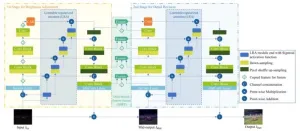(Press-News.org) The Centre for Research and Innovation for Black Survivors of Homicide Victims (The CRIB) is calling for decisive action to address the grief from homicide that is disproportionately affecting Black communities worldwide — and to tackle the root causes of homicide that impact this population.
In a paper published in the journal Homicide Studies, University of Toronto social work professor Tanya Sharpe and colleagues argue that the prevalence and spread of homicide grief — the grief that follows the murder of a loved one — in Black communities throughout the global diaspora can be viewed as a pandemic. As with the inequitable spread of COVID-19, past and present structural racism and systemic inequalities underlie its pervasiveness.
“Homicide grief in Black communities in North America and beyond has reached pandemic proportions,” says Sharpe, Director of The CRIB and an Associate Professor at U of T’s Factor-Inwentash Faculty of Social Work. “A comprehensive public health framework that incorporates anti-Black racism is essential not only for addressing the trauma from this kind of loss, but also for reducing homicide rates.”
Recommendations for the framework encompass strategies both to prevent homicide and mitigate the impact of homicide grief. They include promoting research to understand how structural inequalities affect homicide rates, enhancing early detection of homicide grief and improving the availability of culturally responsive support services.
“Surviving family and friends often struggle to access quality mental health care and grief counselling, forcing Black communities to rely heavily on overburdened informal support systems to help cope with their grief,” says Sharpe, who holds the Factor-Inwentash Chair in Social Work in the Global Community.
Multiple studies show that about half of individuals who are bereaved due to homicide meet the criteria for prolonged grief disorder, which is characterized by persistent mental distress and associated with negative health outcomes that result in a higher risk of mortality from all causes. In addition, intergenerational and present-day trauma from experiences of racism and discriminatory social systems trigger prolonged homicide grief.
“The confluence of inequities that informs a generation of Black communities’ susceptibility to homicide grief is a crisis to every system, sector, and society. Thus, the urgency of a public health mandate must recognise the pandemic of homicide grief as a problem of society, not a disease of Black communities.” says Annette Bailey, an Associate Professor at Toronto Metropolitan University’s Daphne Cockwell School of Nursing, who co-authored the paper led by Sharpe, along with Monte-Angel Richardson, a Research Assistant with The CRIB.
Black individuals comprise only 4.3 per cent of the Canadian population, yet the rate of homicide victims who identify as Black is four times higher than the rate for non-racialized individuals. In Toronto, the homicide victim rate is nearly 10 times higher for Black males. The situation is similar in the U.S., where research suggests that every Black American will experience the homicide of a loved one at least twice in their lifetime.
While there are some gaps in the race-based homicide data in Canada and most countries, the paper cites ample evidence for the sustained prevalence of homicide grief in Black communities.
“These stark statistics tell part of the story, but they don’t account for all those left behind,” says Sharpe. “It’s estimated that every homicide victim has at least seven to 10 surviving family members or friends grieving their death.”
The paper explores the impact of cumulative and constant exposure to death through personal experiences of the murder of family and friends, but also through frequent viewing of Black homicide in the media. “The frequency of homicide in Black communities creates a constant, pervasive threat to physical, mental and spiritual wellbeing and impedes grief recovery,” says Sharpe.
In advocating for a public health approach to this issue, she points to the increased recognition of anti-Black racism in the North American context. Canada is developing a Black Justice Strategy to respond to the systemic discrimination that has led to the overrepresentation of Black people in the criminal justice system, including as victims of crime, while the U.S. Surgeon General recently declared gun violence a national public health crisis, noting the disproportionate impact of this violence on Black Americans.
Sharpe is an advisory committee member of the U.S.-based Black & Brown Collective, a group of multidisciplinary researchers working to improve the efficacy of research, policy and practice that addresses safety and wellbeing in communities directly affected by violence.
Key Statistics:
Twenty-five studies across the Organization for Economic Corporation and Development (OECD) and non-OECD countries revealed that roughly half of individuals bereaved due to homicide met the diagnostic criteria for prolonged homicide grief disorder.
It is estimated that every homicide victim has at least 7 to 10 surviving family
members or friends grieving their deaths. These numbers suggest that worldwide, in 2021, there were 4.58 million surviving family members and friends grieving the murder of 464,000 homicide victims – numbers that are expected to continue increasing into 2030.
Research suggests that every Black American will experience the homicide of a loved one at least two times in their lifetime.
In 2020–2021, homicide rates were eight times higher for Black American males and four times higher for Black American females than their white counterparts.
Although Black Americans make up roughly 14% of the U.S. population, they account for more than half of gun homicide victims.
In Canada, Black populations comprise only 4.3% of the Canadian population and yet the rate of homicide victims who identify as Black is four times higher than the rate for non-racialized people.
The homicide victim rate is nearly 10 times higher for Black males in Toronto than for the whole Toronto population.
END
Pandemic of homicide grief in global Black communities urgently needs a public health response
2024-09-11
ELSE PRESS RELEASES FROM THIS DATE:
How do human and dog interactions affect the brain?
2024-09-11
During social interactions, the activity of the brain’s neurons becomes synchronized between the individuals involved. New research published in Advanced Science reveals that such synchronization occurs between humans and dogs, with mutual gazing causing synchronization in the brain’s frontal region and petting causing synchronization in the parietal region. Both regions are associated with attention.
The strength of this synchronization increased with growing familiarity of human–dog pairs over 5 days, and tests indicated that the human is the leader while ...
Can green finance effectively reduce carbon dioxide emissions while promoting economic growth?
2024-09-11
New research published in Business Strategy and the Environment based on information from G7 countries demonstrates that green finance—loans, investments, and incentives that support environmentally-friendly projects and activities—can reduce carbon dioxide emissions. Also, data indicate that investments in green projects are profitable.
The study found that G7 countries' environmental conditions have been negatively impacted by economic development; however, there are advantages of green finance solutions for economic growth.
The study’s investigators ...
Are there racial differences in the use of opioids after returning home from hospitalizations for hip fractures?
2024-09-11
In an analysis of information on 164,170 older adult Medicare beneficiaries who were hospitalized for hip fractures, a similar proportion of Black and white beneficiaries used opioids after they were discharged and returned to the community, but Black beneficiaries consistently received lower doses of the pain medications.
In the study published in the Journal of the American Geriatrics Society, investigators observed that on average Black beneficiaries received the equivalent of around 250 fewer milligrams ...
Are long stems on flowers an adaptation that encourages bat pollination?
2024-09-11
Flowers that are pollinated by bats tend to have long stems that make them stand out from the surrounding foliage. New research published in New Phytologist reveals the evolutionary advantage that this characteristic provides to plants to ensure that they are discovered by bats.
In simple backgrounds lacking foliage, bats showed no significant difference in the time it took them to find flowers with long versus short stems, but in complex backgrounds (with arrays of leaves and flowers), bats took nearly twice as much time to locate short-stemmed flowers.
Investigators hypothesize that flowers located away from the surrounding foliage likely help bats to distinguish ...
New research provides insights into how the brain regenerates lost myelin
2024-09-11
The neurons of the brain are protected by an insulating layer called myelin. In certain diseases like multiple sclerosis, this protective layer is damaged and lost, leading to death of neurons and disability. New research published in The FEBS Journal reveals the importance of a protein called C1QL1 for promoting the replacement of the specialized cells that produce myelin. The findings could have important implications for the ongoing effort to develop new and improved therapies for the treatment of demyelinating diseases.
In experiments conducted in mice, deleting the gene that codes for C1QL1 caused a delay in the rate at which oligodendrocytes ...
Cells that die during inflammation send wound-healing messages
2024-09-11
Cells that die during inflammation send wound-healing messages
A study by the team of Prof. Kodi Ravichandran (VIB-UGent Center for Inflammation Research) and colleagues found that pyroptosis, a form of programmed cell death traditionally thought to be purely inflammatory, also plays a crucial role in promoting healing and tissue repair. This research, published in Nature, opens new avenues for understanding how our bodies respond to injury and could lead to innovative treatments for wounds and inflammatory diseases.
Dying cells
About a billion cells ...
Risk of secondary cancers after CAR T therapy may be similar to risk after other cancer treatments
2024-09-11
Bottom Line: The frequency of second primary malignancies (SPMs) arising in cancer survivors following treatment with CAR T-cell therapy was statistically comparable to the frequency of SPMs following other standard-of-care therapies, according to a systematic review and meta-analysis.
Journal in Which the Study was Published: Clinical Cancer Research, a journal of the American Association for Cancer Research (AACR)
Author: Kai Rejeski, MD, a visiting investigator and research fellow in the Adult Bone Marrow Transplant Service at Memorial Sloan Kettering Cancer Center.
Background: In January 2024, the U.S. Food and ...
Enhance and revise for better low-light image enhancement
2024-09-11
With the development of intelligent era, information captured in low-light environments has become increasingly vital. Low-light enhancement technology is now a significant research topic in the domain of machine vision. Designing a robust low-light enhancement algorithm can not only improve the contrast of images, but also restore color and texture details, so as to obtain more distinct and accurate low-light scene information.
The team led by Prof. Danhua Cao from Huazhong University of Science and Technology (HUST), ...
Multiple ways to evolve tiny knee bone could have helped humans walk upright
2024-09-11
The evolution of bones in primates’ knees could have implications for how humans evolved to walk upright, a new study has found.
Researchers from King’s College London analysed the presence of the lateral fabella, a bone in the knee the size of a sesame seed, in 93 different species of primates.
They found that while most primates have these bones, they are often absent in hominoids, the group of primates that humans belong to alongside chimpanzees, gorillas, gibbons, and others.
Yet ...
UBCO study explores access to psychedelics for therapeutic use
2024-09-10
Feeling safe and comfortable are key when discussing your health and wellbeing with your primary care provider.
However, that feeling of comfort and safety can’t be taken for granted among many people who have turned to psychedelic substances—including psilocybin—to help control their symptoms of depression, anxiety or PTSD. Now, a team of UBC Okanagan researchers in the Irving K. Barber Faculty of Arts and Social Sciences has published a study looking into patient perspectives and potential issues when it comes to discussing psychedelics for therapeutic use with their physicians.
Dr. Michelle St. Pierre conducts ...

